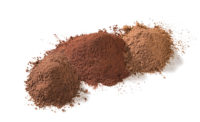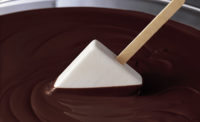Dairy Foods:We’ve established that chocolate and dairy make a winning duo. But not every match is heaven-sent. For example, why is an appealing chocolate profile difficult to achieve in yogurt?
Reed: Chocolate and cocoa flavors don’t work well in yogurt because of the acidity caused by lactic acid bacteria. Cocoa powder can add buffering capacity, which means the cultures have to produce more acid to reach pH 4.6. This gives a higher titratable acidity and a tart flavor.
Widlak: The acidic, low-pH environment decreases the chocolate flavor impact of alkali-treated or Dutched chocolates. Natural cocoa powders processed under acidic conditions, such as ADM’s Fresca Cacao, have flavor profiles that are more fruity and compatible with yogurts and other more acidic dairy products.
Dairy Foods: What are the key considerations when choosing between chocolate and cocoa powder as ingredients in a dairy application?
Reed: As ingredients, cocoa powder and chocolate are very different. There are three areas to consider when choosing which product to use: flavor, application and cost.
First, cocoa powder has a very concentrated chocolate flavor. It is often used in products when the goal is to avoid adding additional cocoa butter and sweetness. On the other hand, chocolate is a great choice when a rich, full flavor is desired. Chocolate also adds sweetness as a result of the higher sugar content.
Next, application plays an important role in ingredient choice. And since cocoa powder comes in a wide variety of colors, it allows for greater color flexibility in final products. Also, because of the lower cocoa butter content, powder is more easily incorporated in beverages compared to chocolate. However, when creating a more decadent artisan product, chocolate may be a better option.
Lastly, cocoa powder is generally less expensive as a result of fewer processing steps when compared to chocolate.
Dairy Foods: So which applications work best with cocoa powder, and which with chocolate?
Reed:Cocoa powders are universally used throughout many dairy applications, including dry mixes that are used in the fluid milk industry, ice cream, variegates and ice cream coatings. Typically, cocoa powder is used in place of chocolate because of its easy incorporation and more concentrated flavor. For instance, cocoa powder is more commonly used in ice cream than chocolate and chocolate liquor because it imparts a stronger flavor due to its lower fat content that does not inhibit immediate flavor delivery. And again, cocoa powder is generally less expensive than chocolate.
Chocolate can be used, but it is more difficult to handle; it needs to be melted before it can be incorporated into a dairy application. Ground forms of chocolate can be an advantage in these situations, because the smaller surface area allows the chocolate to melt faster.
Widlak: If the dairy product is in a solid form or frozen, a liquor can easily be incorporated into the dairy product with sufficient shear. In liquid or semi-liquid applications, a powder is generally used as the powders can remain dispersed with the addition of gums and emulsifiers.





